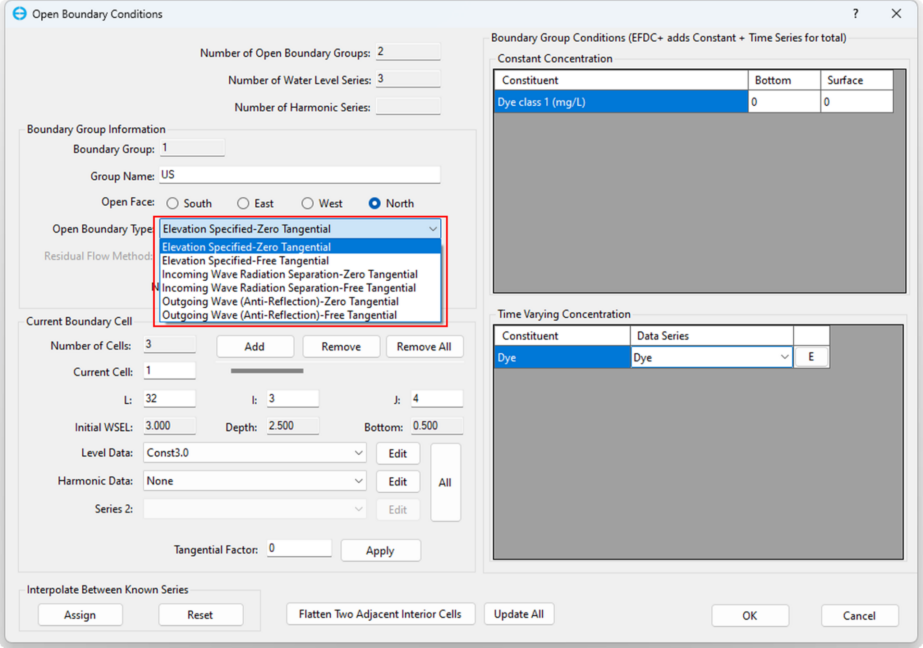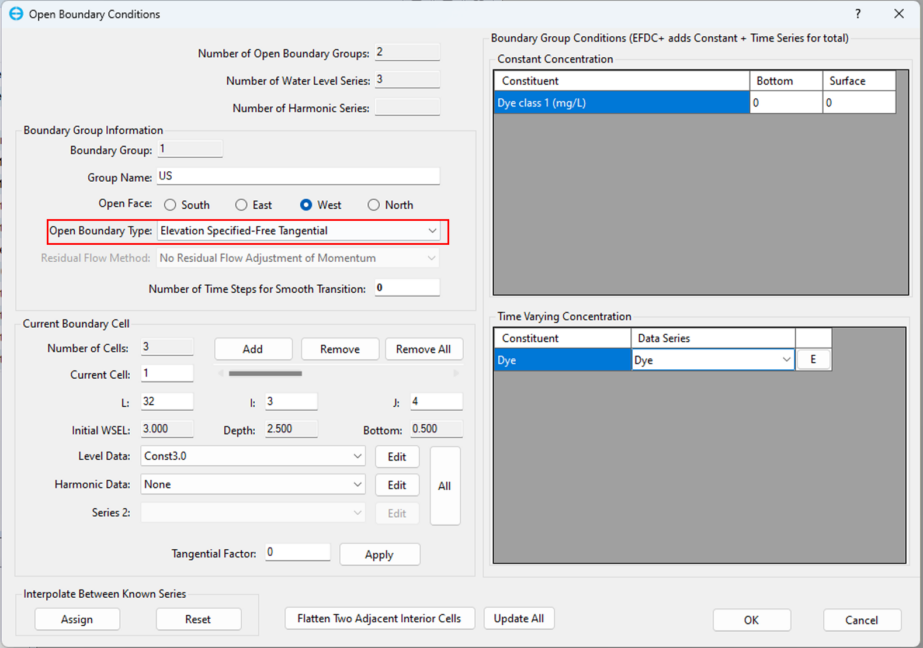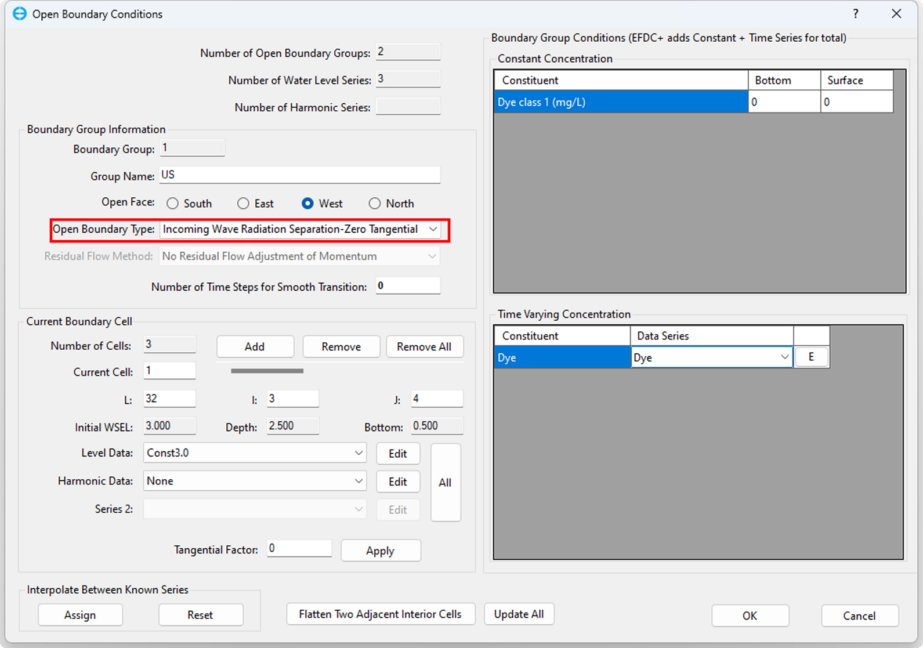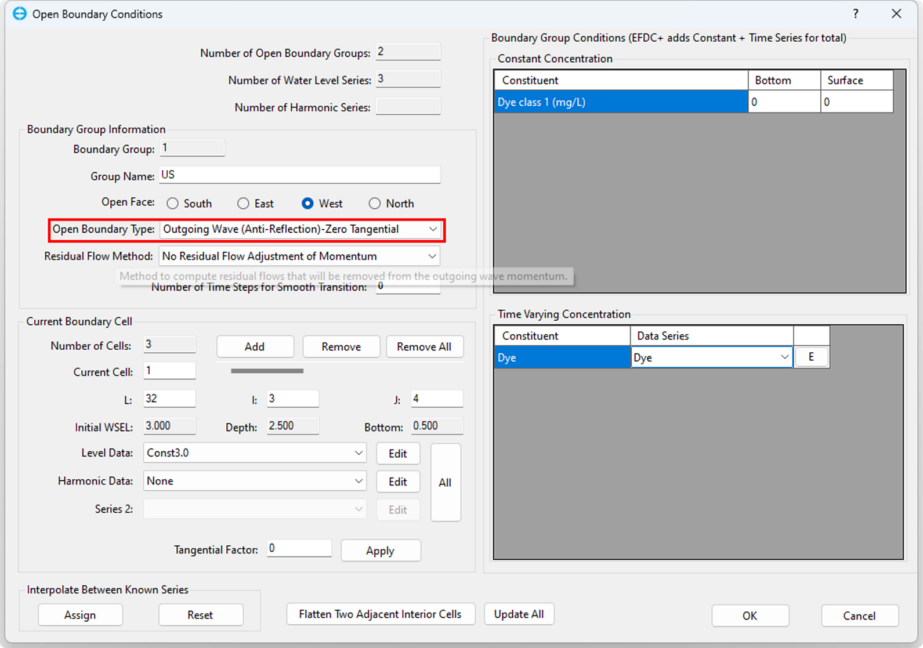Different Types of Open Boundaries and When to Use Them
Understanding and effectively utilizing open boundaries is crucial for accurate modeling and simulation in environmental and coastal engineering. Open boundaries, which define how the model interacts with the external environment, play a pivotal role in the EEMS model. This blog delves into the various types of open boundaries supported by EEMS, each serving a unique purpose and suited for specific scenarios. From Elevation Specified boundaries that manage water surface elevation to Incoming and Outgoing Wave Radiation boundaries that handle wave dynamics and the distinction between Zero Tangential and Free Tangential conditions, this guide explores when and why each boundary type should be used. Whether you are managing tidal influences, wave reflections, or riverine inputs, understanding these boundary conditions will enhance your modeling accuracy and efficiency, leading to more reliable environmental assessments and coastal management strategies.
In the Open Boundary Conditions form, click the Open Boundary Type to reveal a drop-down menu. This menu offers six options, as illustrated in Figure 1. Detailed descriptions of each boundary type are provided in this blog.

Zero Tangential and Free Tangential
The six available options can first be separated into two categories: Zero Tangential and Free Tangential.
- Zero Tangential: This option assumes no tangential flow at the model boundary. This means the water flow parallel to the boundary is considered zero. Through the setting of masks between cells in the first two columns of cells, these types of conditions effectively restrict any lateral flow or exchange of momentum along the boundary.
- Free Tangential: This option allows tangential flow at the model boundary. Meaning it allows lateral flow or exchange of momentum parallel to the model boundary.
Since the blocking of lateral flow was achieved by setting up masks between each boundary cell, the additional columns of masks in the zero tangential option help improve the model stability.
Elevation Specified
Elevation Specified is the standard method for open boundary. It is most suitable for estuaries and coastal areas affected by tides. It is not optimal if the water elevation time series has sudden changes or the model area is relatively small. When the water elevation time series has sudden changes or the model area is relatively small, the excess momentum from the introduced pressure gradient will usually cause a “seiching” effect within the model domain, which requires a longer time for the model to subside.
If the user notices their model suffers from this issue, they may consider switching to other options below. It is recommended that the user match the initial water elevation with the boundary time series, no matter which option is selected.

Incoming Wave Radiation Separation
Incoming wave radiation separation is a legacy option in EFDC+. With the Radiation Separation boundary condition, the incoming wave at an open boundary is separated from the outgoing wave, assuming the incident wave is twice the required surface elevation (Zhou, 2014). This option effectively reduces waves generated in the interior of the model domain, diminishes the affect of wave reflection, and allows the model to reach the desired water movement faster than the “Elevation Specified” option. However, due to the nature of this method, when assigning a tidal-like water elevation time series as a boundary condition, the result of this option may have two times the fluctuation in water level and velocities. Therefore, this option is more suitable for an open boundary with fixed value elevation (does not change in time like tide) or a simple test case model.

Outgoing Wave (Anti-Reflection)
The outgoing wave option also allows waves generated in the interior of the model domain to pass outward across the boundary with no reflection. This makes the model reach a steady state faster compared with the “Elevation Specified” option. If the users find the result of the model using the “Elevation Specified” option shows a “seiching” behavior (back and forth velocity), the outgoing wave option will be a good substitution.
Unlike the “Radiation Separation” option, the outgoing wave option will not increase the water elevation and velocity magnitude results by two times. Another good use case for this option will be test case modeling. Usually, the test case model has a much simpler environment (i.e, wave flume), and the modeling time period is often shorter than general environmental modeling cases. Therefore, having water movement reach a desired condition within a short time is critical. The “Outgoing Wave” option would be an optimal choice for open boundary conditions.

Conclusion
Choosing the right open boundary conditions is essential for precise environmental and coastal engineering and modeling. This blog detailed various open boundary types supported by EEMS, highlighting their unique purposes and appropriate applications. These boundary conditions improve model accuracy by defining how waves interact, allowing tailored simulations based on study area dynamics. In summary, the choice of boundary condition depends on study area dynamics and desired simulation accuracy. Each type offers unique advantages for managing wave behavior at open boundaries, contributing to more reliable environmental assessments and coastal management strategies. More behavior of all three types of open boundary options can be found on the EEMS blog website “Anti-Reflection Open Boundary Condition.”
Do you want to try these options for yourself? You can start by downloading EEMS and activating in the free demo mode and the running our demonstration model. To see these features in action, head over to our YouTube page.
Please contact us if you have comments or questions. For more information on EFDC+ capabilities, contact the DSI team today.
Talk to the experts
References
Zhou, Juntao ; Shunqi Pan and Roger A. Falconer, 2014. Effects of Open Boundary Location on the Far-Field Hydrodynamics of a Severn Barrage. Hydro-environmental Research Centre, School of Engineering, Cardiff University, Cardiff CF24 3AA, UK.








